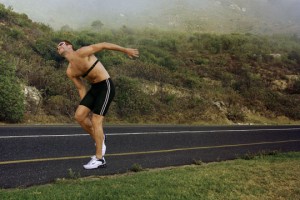Are You Hurt Or Injured? How To Distinguish Your Pain
 As you begin to push your endurance and/or perhaps even your performance envelopes, there will be moments during your training that you will be in pain. The most important question you need to be able to answer is: Do you just hurt or are you injured?
As you begin to push your endurance and/or perhaps even your performance envelopes, there will be moments during your training that you will be in pain. The most important question you need to be able to answer is: Do you just hurt or are you injured?
For the experienced endurance athlete, this is a relatively easy question to answer because they understand their bodies and how they should feel given a certain training stimulus or give a certain block of training. However, for those new to endurance sports, they need to pay very close attention to the pain signals they are receiving so that they don’t continue to push through an injury or something that could cause an injury.
What is an example of pain that is not likely to cause injury? A running example would be a side stitch. This pain occurs primarily when your diaphragm is anaerobic and is not getting the oxygen it needs to meet the demands called upon it. In this instance, the pain can become extreme sometimes but there is very little chance that injury will occur from it. You should continue to push through this pain. Another example I can give is from cycling that I experienced myself. I had back to back long rides on the bike, a 7 hour ride on Saturday followed by a 5 hour ride on Sunday. On the 7 hour ride I developed two quarter sized saddle sores on my sit bones and the last couple hours of the ride felt like I was sitting on a concrete block. On a scale from 1 to 10 the pain was about a 7, nothing too extreme but something I couldn’t take my mind off of.
The very next day I had to get back on my bike and sit on those open wounds for 5 hours. The pain was intense. On a scale from 1 to 10 it started out at a 7 or 8 and after about an hour it shot up to a 10. The pain was so intense it gave me a migraine headache for 4 hours of my 5 hour ride. Absolutely unbelievable pain. While the pain was unbearable I did not stop riding because I knew that injury almost impossible to occur from the pain I was feeling. I used that ride to build on my mental fortitude as there are not many opportunities like that.
So now let’s talk about pain that you may experience during these training weeks that you should be concerned about. What are examples of pain that could lead to an injury or pain that actually is an injury?
Example 1: Pain or stiffness in your heel or arch that is more prominent when you first wake up in the morning. This is a common among first time marathoner. The most likely cause of this pain is a tight soleus (lower calf) muscle and/or Achilles tendon that is pulling/tugging on the connective tissue the runs from the base of the soleus around the bottom of the heel and attaches to the foot around the arch/forefoot area. The symptom is heel or arch pain but the cause is a tight soleus/Achilles tendon. If you continue to train through this pain and do not address the cause (reestablish flexibility in the soleus), you can very easily and quickly cause damage and tears in that connective tissue that can take months and months to heel. This particular type heel/arch pain or stiffness is commonly known as Plantar Fasciitis.
Example 2: Knee pain on the outside of the knee. Knees are extremely complex joints and any pain in the knee area should be taken seriously and diagnosed by a medical professional. The most common cause of pain on the outside of the knee is a tight Iliotibial band (or IT band). The IT band is fascia that attaches on the outside of the knee, runs up along the leg and attaches on the outside of the hip. As it gets tight from running it begins to pull/tug on the knee and even pulling it out of alignment in some cases. If the elasticity in the IT band is not restored then knee injuries most often result that can sideline an athlete for months
So while it is very important to understand whether you just hurt or are actually injured (or risk injury), always seek the guidance of a medical professional when you are unsure. Safety in training is paramount to continue a happy and healthy fitness lifestyle.
